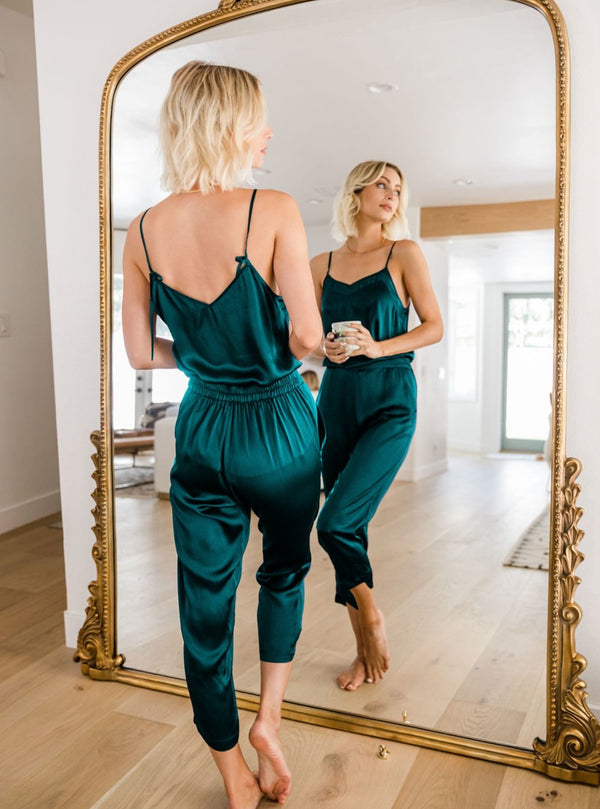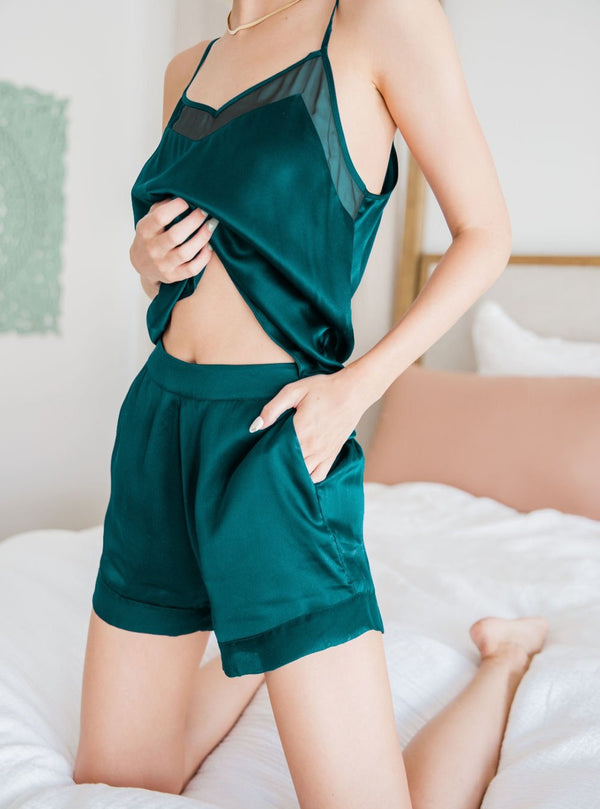Why Silk Fabric Keeps Your Skin Healthy and Plastic Synthetics like Polyester are Toxic and Harmful to You

Did you know that your skin keeps you healthy by getting rid of up to 1lb of toxins per day? Also, that petrochemical fibers like polyester, acrylic, acetate or triacetate actually restrict toxin release?
This was discovered by researchers at Stockholm University who identified health hazards in several properties of inorganic fabrics. They discovered that synthetic fabrics like polyester are treated with thousands of harmful toxic chemicals during production.
Your skin is the body’s crucial organ, accounting for more than 10 percent of body mass. So, the kind of fabric you put on it can not only irritate the delicate parts of your skin, but also ruin it; or even worse, trigger other life threatening diseases such as skin cancer.
Quick facts
The National Institute for Occupational Safety and Health has discovered that Occupational Skin Diseases (OSD) are the second most common type of illnesses and can occur in several different forms including:
- Irritant contact dermatitis
- Allergic contact dermatitis
- Skin cancers
- Skin infections
- Skin injuries
- Other miscellaneous skin diseases
In most cases, hidden chemicals in our clothing plays a huge role in causing OSD. Compounding this is, unlike the nutrition facts on the back of our favorite foods, clothes manufacturers are not obliged to state what their products are made of, which means they don't have to conveniently itemize a list of ingredients for you. However, fear not. We will help you choose the right fabric for your skin by comparing two types of fabrics: polyester and silk.
What is polyester?
Polyester was first invented in 1941 to offer people an alternative fabric, polyester.
It is the cheapest of all synthetic materials, which is a type of plastic. It’s cheap because it costs less to produce, and is 0% organic. This explains why 99% of all cheap clothing is likely to be made out of it.
Polyester is made up of purified terephthalic acid , dimethyl terephthalate and monoethylene glycol properties. The three can trigger carcinogens, or a substance capable of causing cancers.
It is also used to manufacture all kinds of bottles, glass and cans, sanitary pads, upholstery, nappies, blankets, mattresses, pillows, curtains; you name it.
You know your clothing is made out of polyester without reading a label if it is hot and uncomfortable to be in. This is because it's like a plastic bag, and on a hot day, your sweat gets trapped between your skin and the fabric. Yuck!
Polyester pillow cases
Most sheets are made of polyester, microfiber or cotton. Scientists have been warning us for years about the dangers associated with allowing polyester to touch our skins.
Here's why you should avoid any pillow case, or clothing made out of it:
- Polyester pillow cases may lead to respiratory infections, confirmed by scientists.
- Being careful about the kind of textile your pillow cases are made helps to regulate your body temperature, this, in turn, can lead to a better night sleep.
Polyester underwear
Polyester can affect sperm count in men. This was confirmed by a study conducted in 1993 which showed that polyester undergarments can reduce sperm count in men.
Let's look at silk.
What is silk?
Silk is a natural fiber renowned for its luster, and durability. As it is made from 100% organic material, it essentially costs a lot more to produce; and it is treated as a high-end product by most people. It is hypo-allergenic, has no pesticides and is 100% biodegradable. It mainly consists of fibroin, a protein found in certain types of insects. Several types of insects are used to produce silk, including beetles, bumble bees, silkworms, hornets, weaver ants, and many more. Most of the world’s silk is derived from Bombyx mori larvae, which are worms found only on mulberry trees.
Silk is commonly used in:
Nightgowns, lingerie, robes, eveningwear, blouses, suits, curtains, bedding sheets, and so on.
According to World Atlas, China holds the number one position as the world’s largest silk manufacturer. At least 146,000 metric tonnes of silk is produced in China per year, with India following closely with 280,000 tonnes per year as the second country.
The process of producing silk
Silk originates from the continuous strand of saliva from the silkworm (a caterpillar, actually!). This saliva hardens to form the cocoon to protect the silkworm while it transforms into a beautiful butterfly.
The benefits of using silk
The benefits of wearing silk are well documented. It remains one of the safest fabrics for today. Its softness helps to keep the skin healthy and young. In turn, a healthy skin provides protection, controls temperature, reserves calories, vitamin D synthesis, and so on. It is also 100% biodegradable so you can rest easy knowing your silk pieces are safe for the environment!
Other benefits include:
1. Silk prevents wrinkles
As your face has more contact with a pillow case than any other fabric, it goes without saying that you should own one. Scientists have long discovered that people who use traditional cotton pillow cases tend to get wrinkles than those who use silk pillow cases. Additionally, studies show that people who use silk tend to have smooth faces and don’t struggle to fall asleep. Smooth skin and a full nights sleep?! That sounds like a win-win to us!
2. Silk prevents frizzy hair
Silk pillowcases are a great way to settle down your crazy frizzled hair when you wake up making for a quicker and easier morning routine!
3. Silk keeps cleaner sleep surface
When you use silk you’re assured one thing: The surface you sleep on is cleaner and safe. Some of silk’s hypoallergenic properties include a natural resistance to dust mites, fungus, and mold.
4. Silk helps to retain moisture on your skin
Silk helps keep moisture close to your skin and will help your skin stay more hydrated than many fabrics on the market. Sleeping on silk is a great option for maintaining the natural moisture of your skin and won’t cause extra wrinkles.
Silk pillowcases
If you want to be rejuvenated with the late night sleep, silk pillowcases are a must-have.
They possess serious beauty benefits, we mentioned above. And some silk such as ours is also thermo-regulating which means you can say goodbye to being too hot or too cold at night! Dermatologists and texting experts have been touting silk for its beauty and health benefits.
Get yourself a silk pillowcase because bacteria can't grow on silk, according to Carr. Furthermore, it's also perfect for helping keep acne at bay.
Assess and edit your wardrobe today!
Start using fabrics that are 100% natural, it is not only much better for your skin but also for our planet. If you’re tempted to purchase a fabric, based on this comparison, we suggest you stick to a natural fabric such as silk.
By definition, silk is biodegradable and compostable, meaning it should be the most sustainable solution.
Word of caution: Know what clothes are made of to choose the right fabric for your skin. Many clothing manufacturers use a blend solution of organic fibers with synthetics for better resistance or reduced cost. Solution; make sure you always read the tag. If it doesn't have a tag, don't buy it.
Last but not least, it's best to focus on quality rather than quantity. That means no more plastic and flimsy dresses for this summer. Looking for quirky tips on how to reduce your plastic and enhance your wardrobe with some fashionable and earth friendly silk pieces? Visit our website today!











